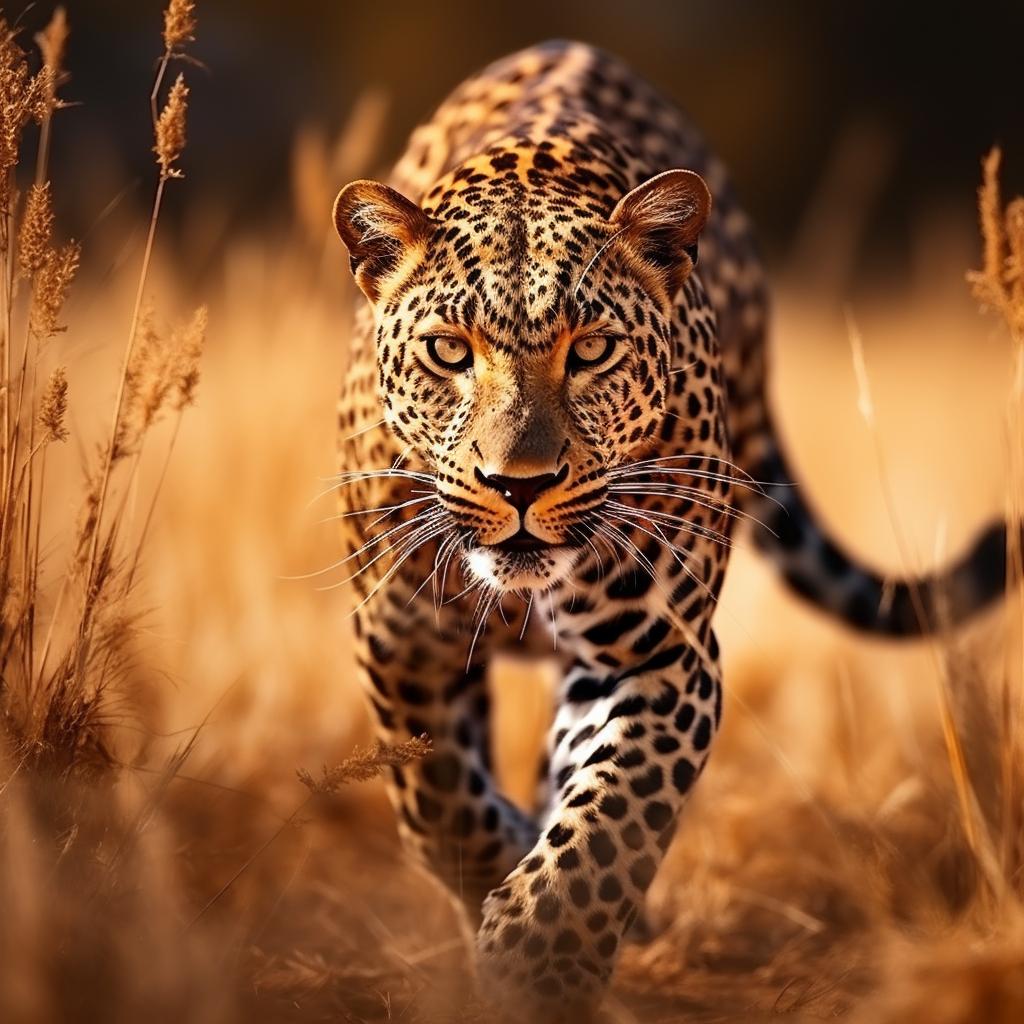Overview
Leopards, the stealthy predators of the wild, are agile and elusive, known for their powerful build and incredible adaptability. They can reach a maximum weight of around 130 pounds (60 kilograms) for males and 90 pounds (40 kilograms) for females. Their muscular bodies and spotted fur allow them to blend seamlessly into their surroundings.

When
The best months if you are planning a trip to see leopards are June, July, August, September and October.
Where
The best countries for spotting leopards in the wild are Sri Lanka, Botswana, Zambia and South Africa.
Diet
These cunning hunters have a diverse palate, adapting their diet to various prey. Their menu includes ungulates like deer and antelope, but they also consume smaller mammals, birds, and even reptiles. Their ability to climb trees enables them to stash and protect their kill from other predators.
Habitat
Leopards display impressive adaptability, thriving in a range of habitats from dense forests to open grasslands.
Best Countries To See Leopards
Sri Lanka
Botswana
Zambia
South Africa

Best Time Of Year To See Leopards
The dry season is considered a favourable time for leopard sightings. As vegetation becomes sparse, it is easier to spot these elusive cats against the backdrop of the savannahs or forests.
Dry seasons typically occur in different months depending on the location, such as winter months in Africa (June to October) or cooler months in other regions.
Where You Are Most Likely To See Leopards
1. Yala National Park, Sri Lanka: Yala National Park is renowned for its high density of leopards. The park's varied ecosystems, including open plains, dense forests, and coastal areas, provide an ideal habitat for leopards to thrive. It is considered one of the best places in the world to observe these elusive cats.
2. Sabi Sand Game Reserve, South Africa: Located adjacent to Kruger National Park, Sabi Sand Game Reserve is famous for its remarkable leopard sightings. The reserve's diverse landscapes and excellent tracking skills of the rangers increase the chances of encountering leopards in their natural habitat.
3. South Luangwa National Park, Zambia: South Luangwa National Park is known for its impressive leopard populations. The park's riverine forests, woodlands, and open plains create a diverse environment where leopards thrive. Guided night drives and walking safaris provide unique opportunities to spot these elusive cats.
4. Moremi Game Reserve, Botswana: Moremi Game Reserve, situated in the Okavango Delta, offers fantastic leopard viewing opportunities. The reserve's wetlands, grassy plains, and mopane forests attract a variety of wildlife, including leopards. Game drives and boat safaris in the reserve present great chances to see these majestic predators.
5. Wilpattu National Park, Sri Lanka: Wilpattu National Park is known for its dense forests and numerous natural lakes, providing an ideal habitat for leopards. With proper planning and guidance from experienced park rangers, visitors can have excellent opportunities to spot leopards in this unique Sri Lankan wilderness.

